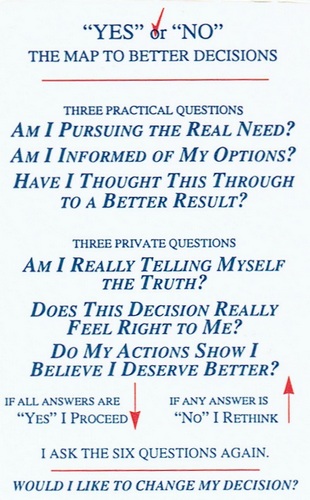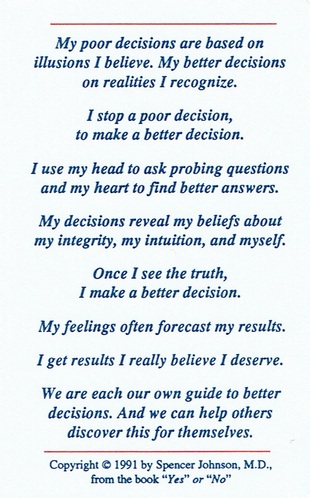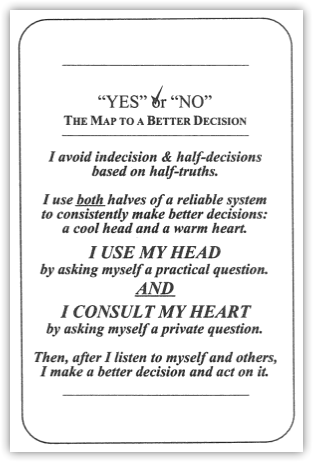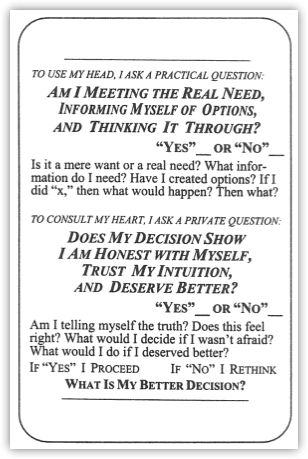"Yes or No?" -- A Classic and Effective Book For Decision-Making
2019-05-17 22:24

In 1991, when I was working for Waldenbooks, we received an advanced reading copy of Dr Spencer Johnson's "Yes" or "No": The Guide to Better Decisions.
It became a treasured item for two reasons. One, I found it a terrifically practical decision-making method. Two, the advanced version was, in my opinion, better than the published version. I'll explain the difference later, but first, about the book.
Like others Dr Johnson authored or co-authored (The One-Minute Manager, Who Moved My Cheese?), the book is written in story/fable style. This was kind of the rage at the time, and in the wrong hands can be annoying. But in the case of Yes or No, I never felt condescended to. It was clear that each page, each paragraph, was carefully thought out.
The book is about a hundred pages long, with larger type, and will take you only about an hour to read. It could be one of the most valuable hours of your life.
Here's a summary of the system, which literally fits on a credit-sized card. The questions are so clearly designed that they don't really need explanation--but read the book anyway!
- Make a tentative decision
- Ask Three Practical Questions
- Am I pursuing the real need?
- Am I informed of my options?
- Have I thought this through to a better result?
- Ask Three Private Questions
- Am I really telling myself the truth?
- Does this decision really feel right to me?
- Do my actions show I believe I deserve better?
- If all six answers are Yes, proceed. If any answer is No, rethink the decision.
The first three questions are "head" questions. They gather and analyze information. The second three questions are "heart" questions. They make you check in with your conscience and look backward from your future self as if the tentative decision had already been made.
The first several times I applied the system it took awhile. But in time I started integrating the questions. I haven't gone strictly through the system in years, but I know I'm still influenced by it.
Here are some of the lessons in the book.
My poor decisions are based on illusions I believe. My better decisions on realities I recognize.
I stop a poor decision to make a better decision
I use my head to ask probing questions, and my heart to find better answers.
My decisions reveal my beliefs about my integrity, my intuition, and myself.
Once I see the truth, I make a better decision
My feelings often forecast my results.
I get results I really believe I deserve.
We are each our own guide to better decisions, and we can help others discover this for themselves.
What change did Johnson make in the final version, and why don't I like it? Here's the exact statement printed in the front matter.
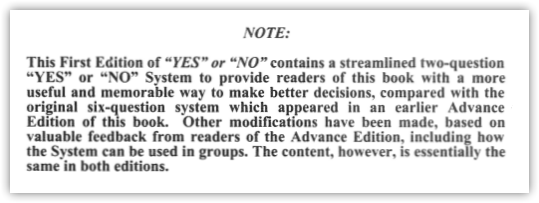
While I understand the impetus to streamline, I really think breaking down the questions leads to better answers. It forces the person to think about each one, adding time and care.
The book has a handy wallet card, which I carried for years before it fell apart. Below is the original, followed by the published version. You can decide for yourself which you like!
Oh, and a final little story. My original copy of Yes or No accidentally got wet, moldy, ucky. I finally let it go several months ago. Then, a week ago, I realized I wanted to reread the book and write a summary. My wife got me a copy through Paperback Swap. Imagine my surprise and great delight when what arrived in the mail was the advanced reading copy! That was a good decision.
